I have noticed that in one of my controllers I am getting $rootScope and $scope injected, and they both point to the same object.
Furthermore, in all my other controllers, the $scope object is shared. So whenever I inject scope, it contains the properties/methods assigned to it in all the other controllers that have so far been instantiated.
This isn't an app that I worked on from the beginning and it's pretty massive. I haven't seen this behavior before and I don't know where to begin diagnosing it. Any ideas what is causing this?
The way that we are setting up our controllers/directives is pretty standard and it looks like this:
angular.module('myApp')
.directive('mainNav', function() {
return {
restrict: 'A',
templateUrl: 'scripts/directives/mainNav/mainNav.html',
controller: 'mainNavCtrl',
replace: true,
link: function(scope, element) {
//Do DOM-related stuff
});
}
};
})
.controller('mainNavCtrl', function($rootScope, $scope, $state) {
//Do controller stuff
});
We do also configure our app as follows:
angular.module('myApp', ['ui.router', 'kendo.directives'])
.config(function ($stateProvider, $urlRouterProvider) { $urlRouterProvider.otherwise('/');$stateProvider .state('app', { url: '/', templateUrl: 'views/app.html', resolve: { //Fetch stuff } }) ; });
In response to Kursad Gulseven's comment, this is what I'm seeing in Batarang:

The scope with ID 002 gets passed in as $scope and $rootScope to the first controller. When properties are added to $scope, they show up on $rootScope. Then all the other controllers are receiving the scope with ID 00A. So properties added to $scope in those controllers are visible to all other controllers getting $scope injected.